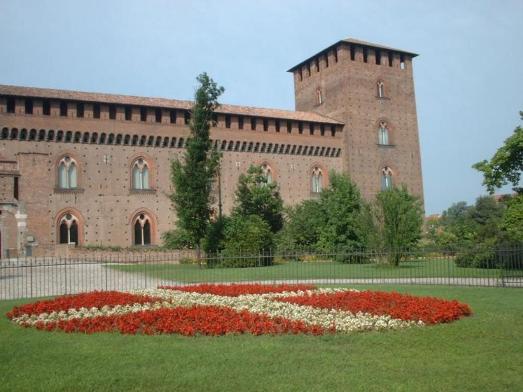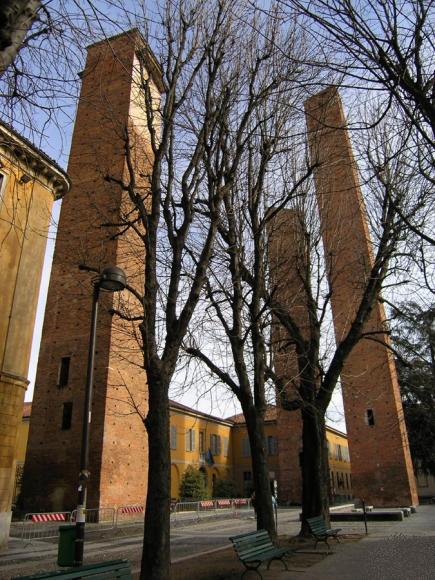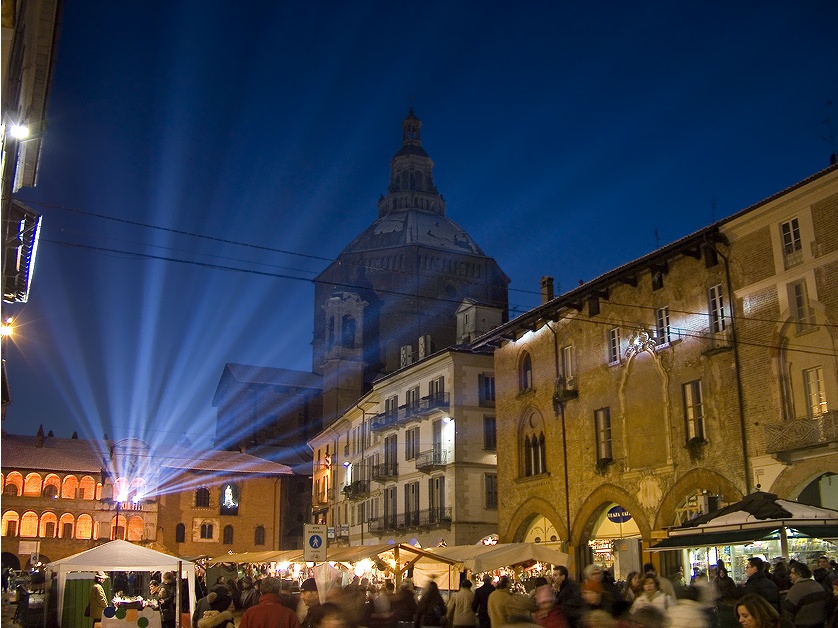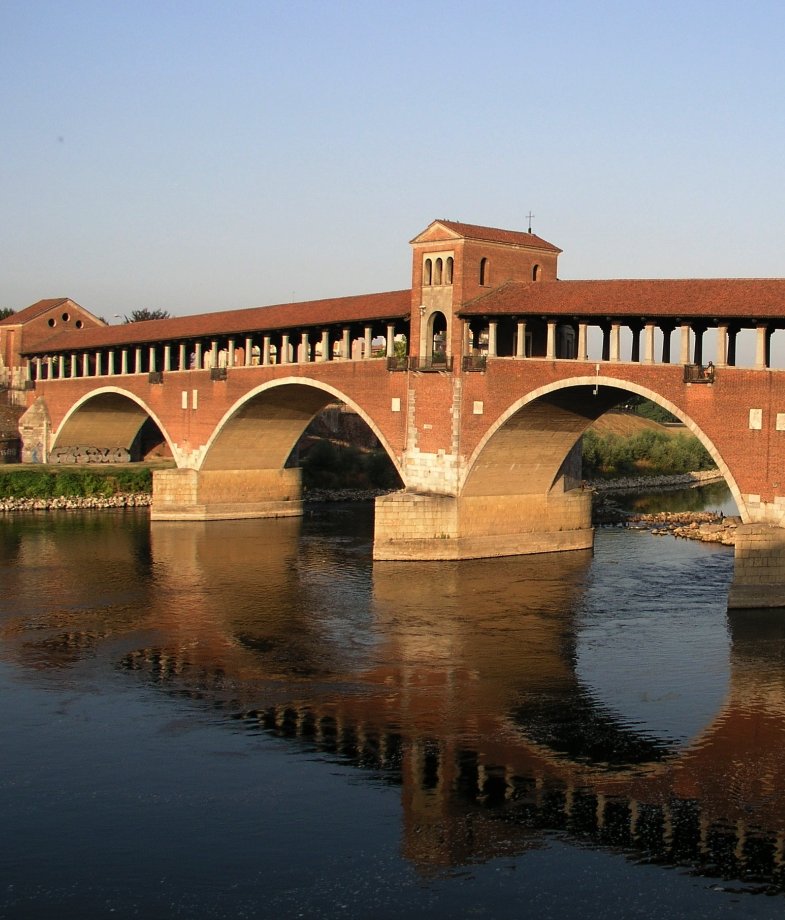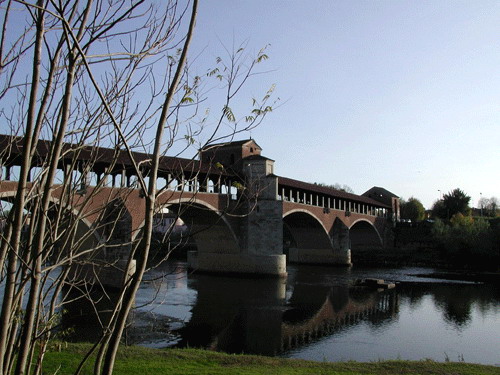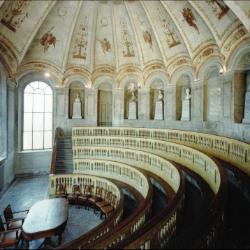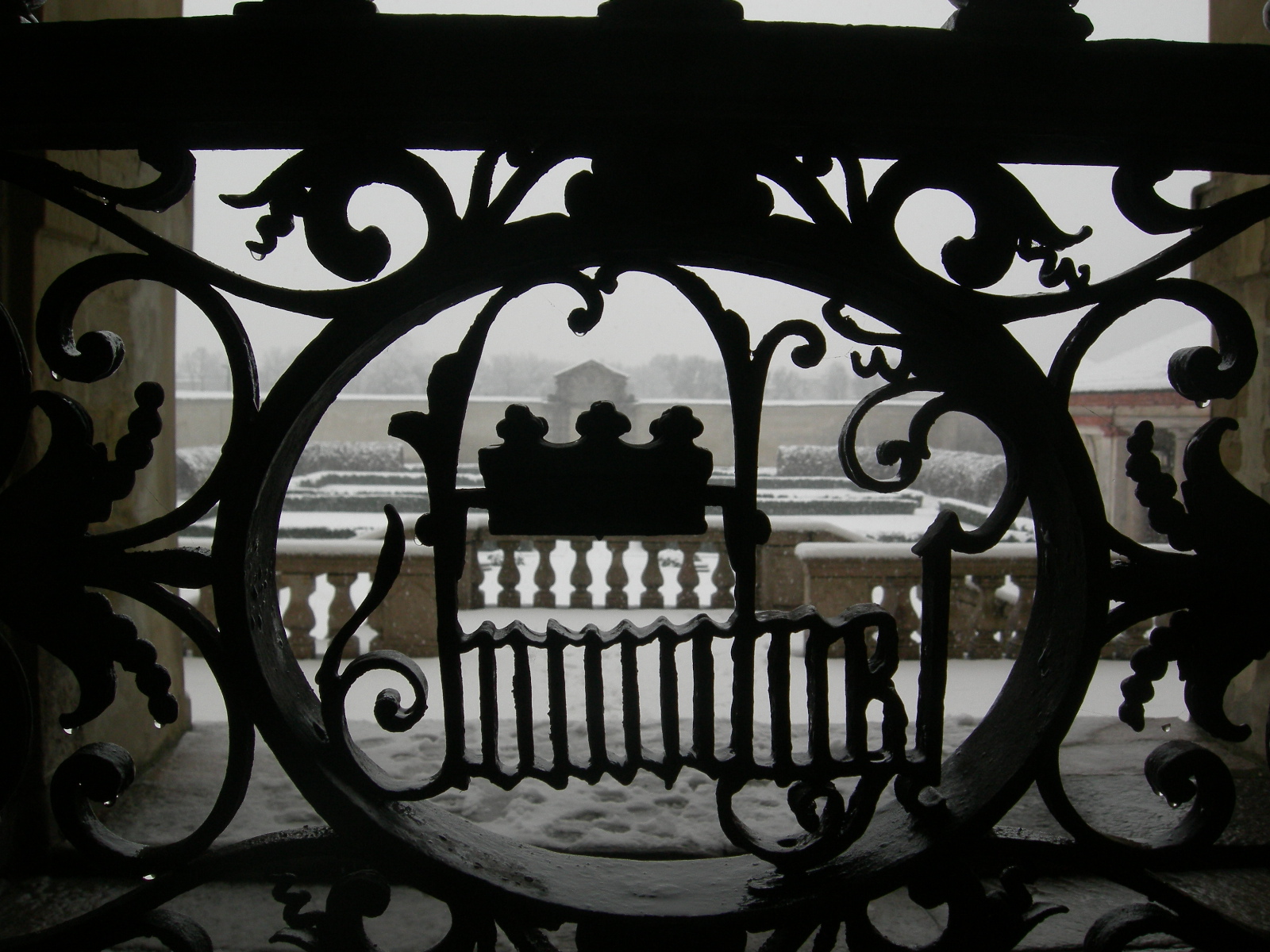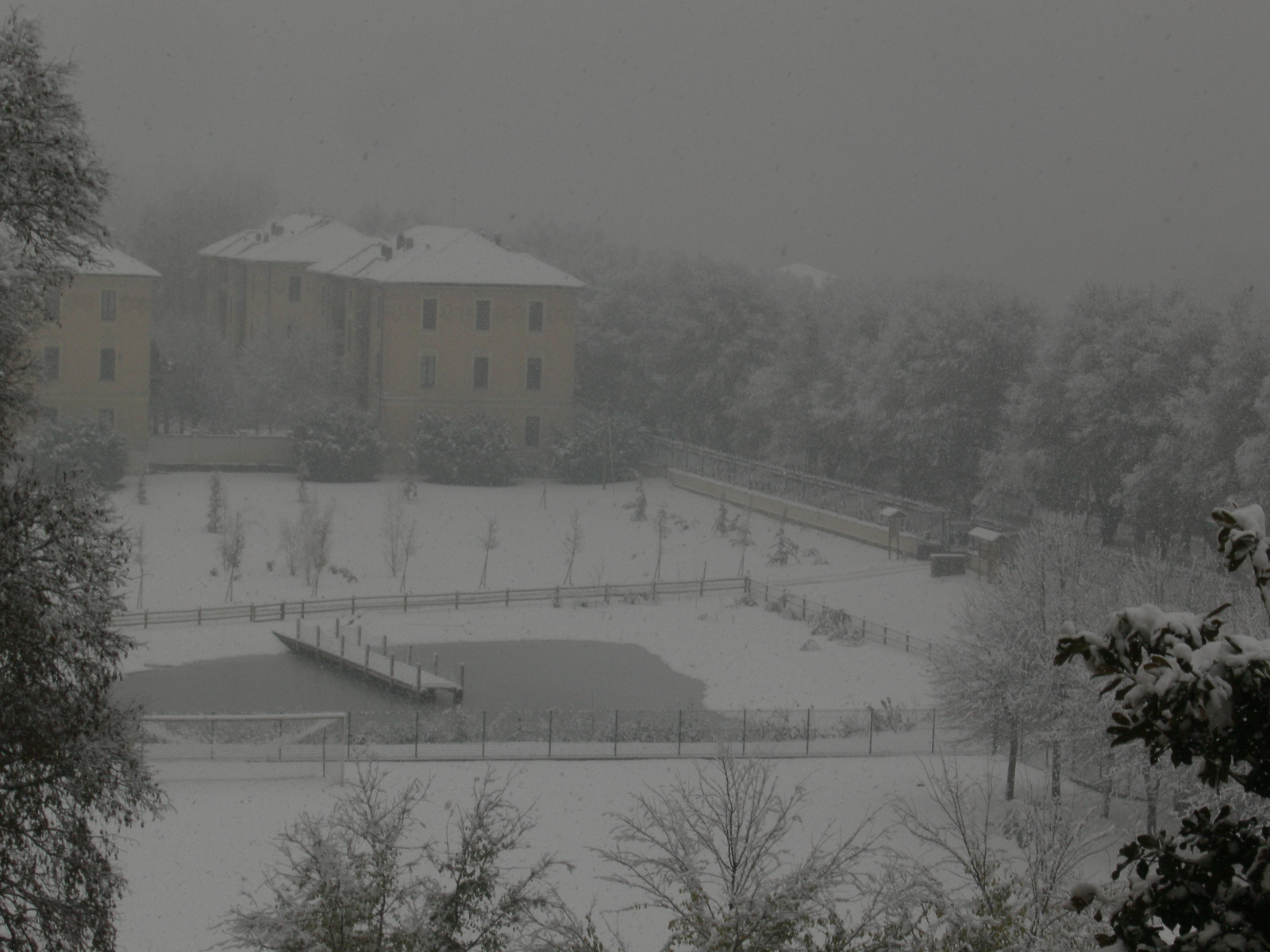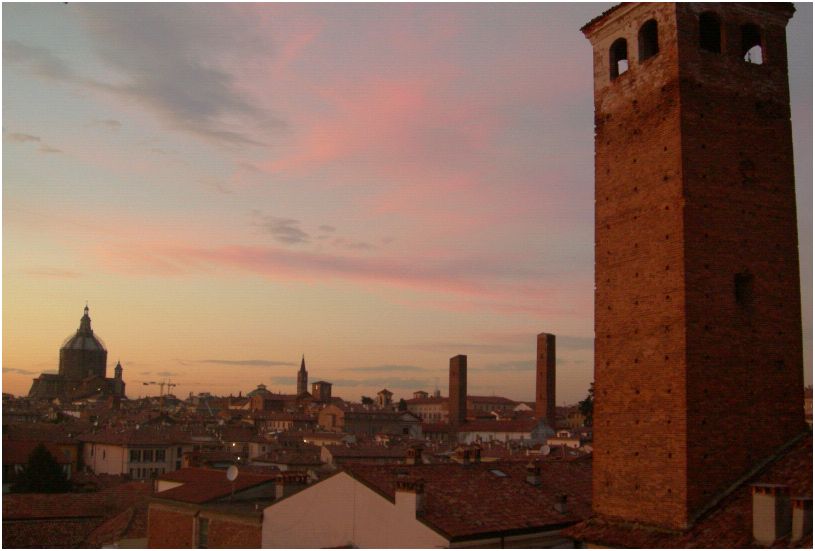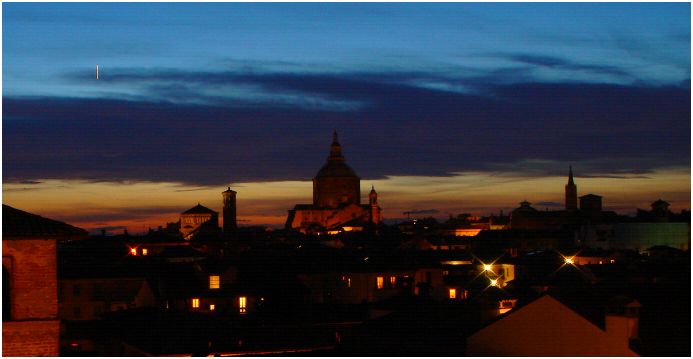Team:UNIPV-Pavia/Pavia
From 2009.igem.org

|
|
|
View Larger Map |
Pavia (pronounced Pavìa, [paˈviˑa]), the ancient Ticinum, is a town and comune of south-western Lombardy, northern Italy, 35 km south of Milan on the lower Ticino river near its confluence with the Po. It has a population of c. 71,000. The city achieved its greatest political importance between 568 and 774, as the capital of the Kingdom of the Lombards.
Pavia is the capital of a fertile province known for agricultural products including wine, rice, cereals, and dairy products. Some industries located in the suburbs do not disturb the peaceful atmosphere which comes from the preservation of the city's past and the climate of study and meditation associated with its ancient University. The University of Pavia, together with the IUSS (Institute for Advanced Studies of Pavia), the Ghislieri College, the Borromeo College, the Nuovo College, the Santa Caterina College and the EDiSU, belongs to the Pavia Study System. Furthermore, Pavia is the see city of the Roman Catholic diocese of Pavia.
Contents |
History
Dating back to pre-Roman times, the town of Pavia (then known as Ticinum) was a municipality and an important military site under the Roman Empire.
Here, in 476, Odoacer defeated Flavius Orestes after a long siege. To punish the city for helping the rival, Odoacer destroyed it completely. However, Orestes was able to escape to Piacenza, where Odoacer followed and killed him, deposing his son Romulus Augustus. This was commonly considered the end of the Western Roman Empire.
A late name of the city in Latin was Papia (probably related to the Pope), which evolved to the Italian name Pavia. Sometimes it's been referred to as Ticinum Papia, combining both Latin names.
Under the Goths, Pavia became a fortified citadel and their last bulwark in the war against Belisarius.
After the Lombards conquest, Pavia became the capital of their kingdom (AD. 568-774). During the Rule of the Dukes, it was ruled by Zaban. It continued to function as the administrative centre of the kingdom, but by the reign of Desiderius, it had deteriorated as a first-rate defensive work and Charlemagne took it in the Siege of Pavia (June, 774) assuming the kingship of the Lombards. Pavia remained the capital of the Italian Kingdom and the centre of royal coronations until the diminution of imperial authority there in the twelfth century. Cathedral of Pavia.
In the 12th century Pavia acquired the status of a self-governing commune. In the political division between Guelphs and Ghibellines that characterizes the Italian Middle Ages, Pavia was traditionally Ghibelline, a position that was as much supported by the rivalry with Milan as it was a mark of the defiance of the Emperor that led the Lombard League against the emperor Frederick Barbarossa, who was attempting to reassert long-dormant Imperial influence over Italy.
In the following centuries Pavia was an important and active town. Under the Treaty of Pavia, Emperor Louis IV granted during his stay in Italy the Palatinate to his brother Duke Rudolph's descendants. Pavia held out against the domination of Milan, finally yielding to the Visconti family, rulers of that city in 1359; under the Visconti Pavia became an intellectual and artistic centre, being the seat from 1361 of the University of Pavia founded around the nucleus of the old school of law, which attracted students from many countries.
The Battle of Pavia (1525) marks a watershed in the city's fortunes, since by that time, the former cleavage between the supporters of the Pope and those of the Holy Roman Emperor had shifted to one between a French party (allied with the Pope) and a party supporting the Emperor and King of Spain Charles V. Thus during the Valois-Habsburg Italian Wars, Pavia was naturally on the Imperial (and Spanish) side. The defeat and capture of king Francis I of France during the battle ushered in a period of Spanish occupation which lasted until 1713. Pavia was then ruled by the Austrians until 1796, when it was occupied by the French army under Napoleon. During this Austrian period the University was greatly supported by Maria Theresa of Austria and saw a great renaissence that eventually lead to a second renaissance due to the presence of leading scientists and humanists like Ugo Foscolo, Alessandro Volta, Lazzaro Spallanzani, Camillo Golgi among others.
In 1815, it again passed under Austrian administration until the Second War of Italian Independence (1859) and the unification of Italy one year later.
The main sightseeing spots in Pavia are: the churches (in particular the Duomo, San Michele Maggiore, San Pietro in Ciel d'Oro, Santa Maria del Carmine etc...), the castle (castello visconteo), the monastery (Certosa di Pavia) and the covered bridge.
University
The University of Pavia is one of the oldest universities in Europe. An edict issued by King Lotarius quotes a higher education institution in Pavia as already established 825 A.D. This institution, mainly devoted to ecclesiastical and civil law as well as to divinity studies, was then elected as the prime educational centre for northern Italy. Enlarged and renovated by the Duke of Milan, Gian Galeazzo Visconti, it became the University of the Duchy, having been officially established as a studium generale by Emperor Charles IV in 1361.
During the following centuries, even though passing through periods of both adversity and prosperity, the fame of the University of Pavia grew and not just in Italy. The continuous presence of learned men and scientists who wrote celebrated works and made important discoveries, such as Girolamo Cardano, Alessandro Volta, Camillo Golgi, Ugo Foscolo together with the distinguished educational record of the University, added to the good name of the institution.
Nowadays, the University keeps on offering a wide variety of disciplinary and interdisciplinary teaching. Research is carried out in departments, institutes, clinics, centres and laboratories, in close association with public and private institutions, enterprises, and factories.
These are the 9 faculties in which the university is divided into:
- Faculty of Economics
- Faculty of Engineering
- Faculty of Humanities
- Faculty of Law
- Faculty of Physical, Natural and Mathematical Sciences
- Faculty of Medicine
- Faculty of Musicology
- Faculty of Pharmacy
- Faculty of Politics
The
Pavia is famous for the colleges, which are a quite unique feature of this university city. Merit-based colleges are: the Ghislieri College, the Borromeo College, the Nuovo College and the Santa Caterina College, while pubblic colleges belongs to the EDiSU. We have fun with sport events and all colleges have their own traditions.
Selected students in Pavia can take classes also at the IUSS (Institute for Advanced Studies), shaped according to the Scuola Normale Superiore di Pisa model, reunites all the colleges of the Pavia Study System.
Moreover our university has a rich historical background in sciences, for example:
Lazzaro Spallanzani (1729–1799) biologist. He performed the first artificial insemination, he studied the digestion, the spontaneous generation and the movement of bats in complete darkness.
Alessandro Volta (1745-1827) professor of physics. He invented the so-called voltaic pile (an early electric battery).
Antonio Scarpa (1752–1832) physician and expert of anatomy. His head is preserved in formaline in the museum of the university.
Camillo Golgi (1843–1926) scientist and physician. He got the Nobel prize for the "black reaction" (to stain neurons) in 1906 and he discovered the Golgi apparatus of the cells!!!
Luigi Luca Cavalli-Sforza (1922-) population genetist. He studies human migrations through genetics, combining linguistic, cultural and archaeological data. Now he lives in Stanford.
If you are interested, please have a look at these articles:
Nature article about the university history museum
Impossible interview with Mr Golgi :-)
IUSS
IUSS-Pavia, the Institute for Advanced Study of Pavia, is the last step of a long lasting higher education process started on 825 when King Lotharius appointed Pavia, the ancient capital of the Lombard kingdom, as the site for higher education of his kingdom. This process went through the foundation in 1361 by Emperor Charles IV of the Studium Generale later on named University of Pavia. The first Colleges for university students were established in the 15th and 16th centuries. They are now 15 offering, to the almost 2.000 students, a unique opportunity of study and cultural enrichment in a multidisciplinary and multiethnic environment. Through centuries the University of Pavia became one of the leading institutions in Europe.
IUSS fulfils, since 1997, an advanced teaching and research model successfully implemented by other prestigious institutions in Italy, like the Scuola Normale Superiore and the Scuola Sant’Anna in Pisa.
Due to the completeness of its education and training fields, which allows a strong interdisciplinary approach, the mission of IUSS is that of contributing to the growth of a small number of selected students by offering them, at any step of their higher education, qualified programs enhancing their capabilities and knowledge. The Institute is also committed to scientific progress by preparing young researchers and developing scientific research programs.
Active part in our School life are:
- Almo Collegio Borromeo
- Collegio Ghislieri
- Collegio Nuovo
- Collegio Santa Caterina
- ISU Colleges
 "
"

